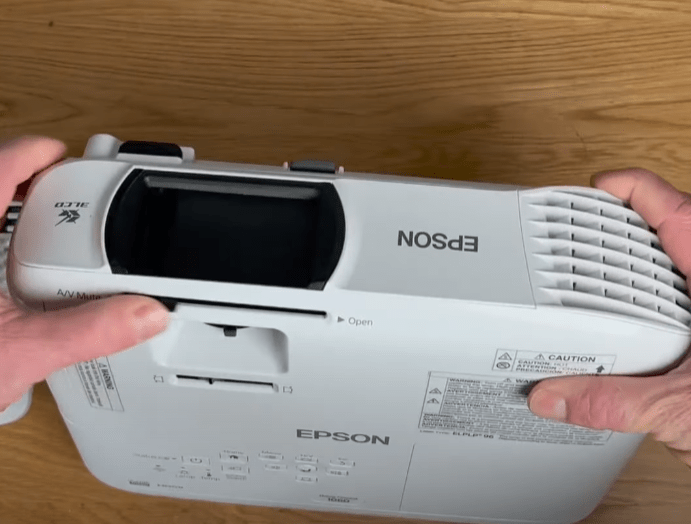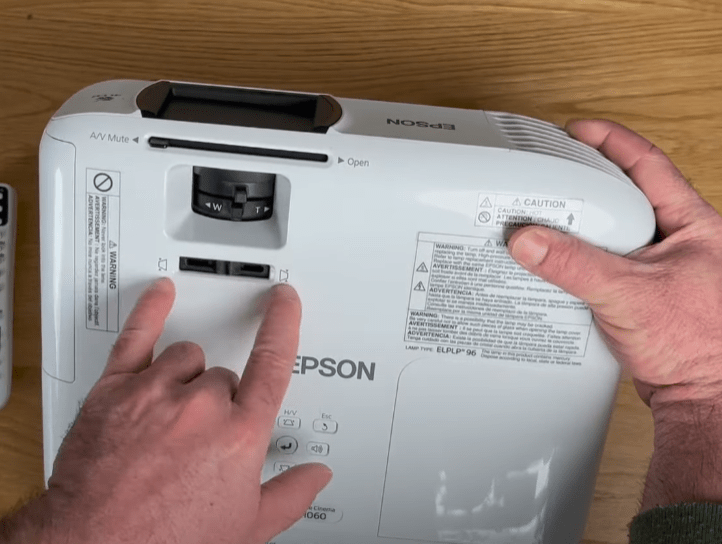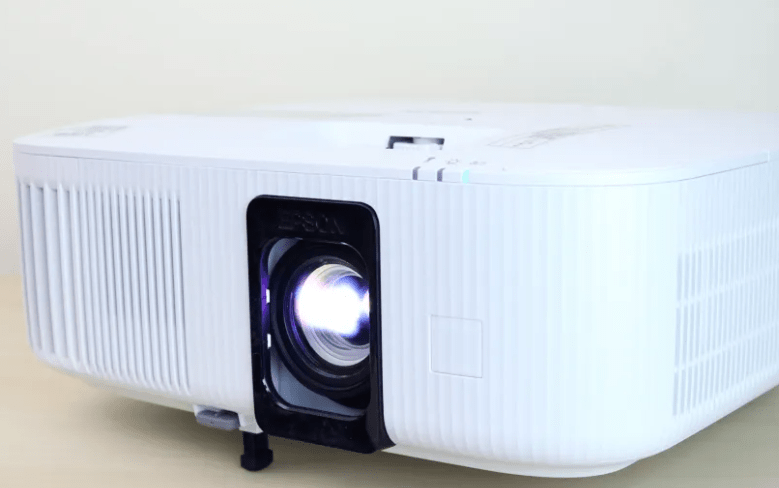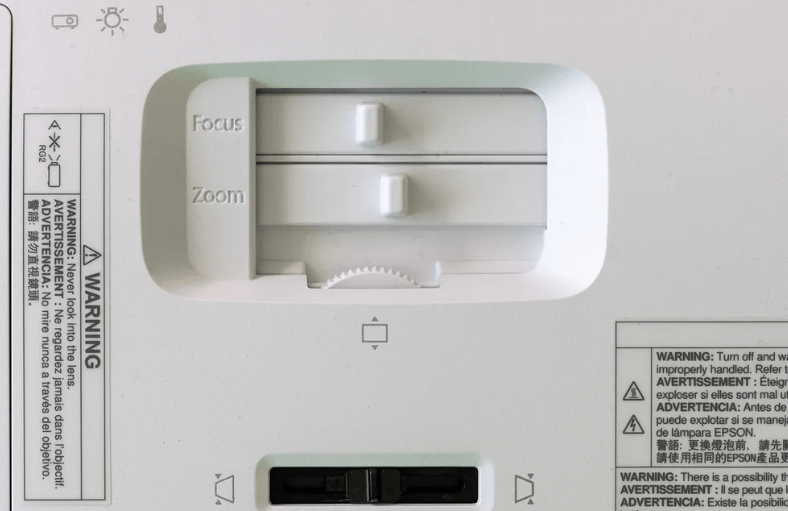At gagadget.com, your trust is our priority. We follow strict quality standards in our research, tests, and analysis of video projectors, to give you the best experience. Learn more
Epson 2350 vs Epson 1060: Comparison
Hey everyone, it's Jim from Gagadget. Today, we're comparing two popular home theater projectors from Epson: the new Home Cinema 2350 and the tried-and-true Home Cinema 1060. Both offer Full HD 1080p resolution and 3LCD technology for bright, colorful images.
But they also have some key differences in gaming features, contrast, and smart functionality that could make one a better fit for your specific needs and preferences. I've spent quality time with both projectors, evaluating picture quality, ease of use, and overall value. In this in-depth comparison, I'll share my hands-on experience to help you decide which one delivers the best big screen experience for your home. Let's dive in!
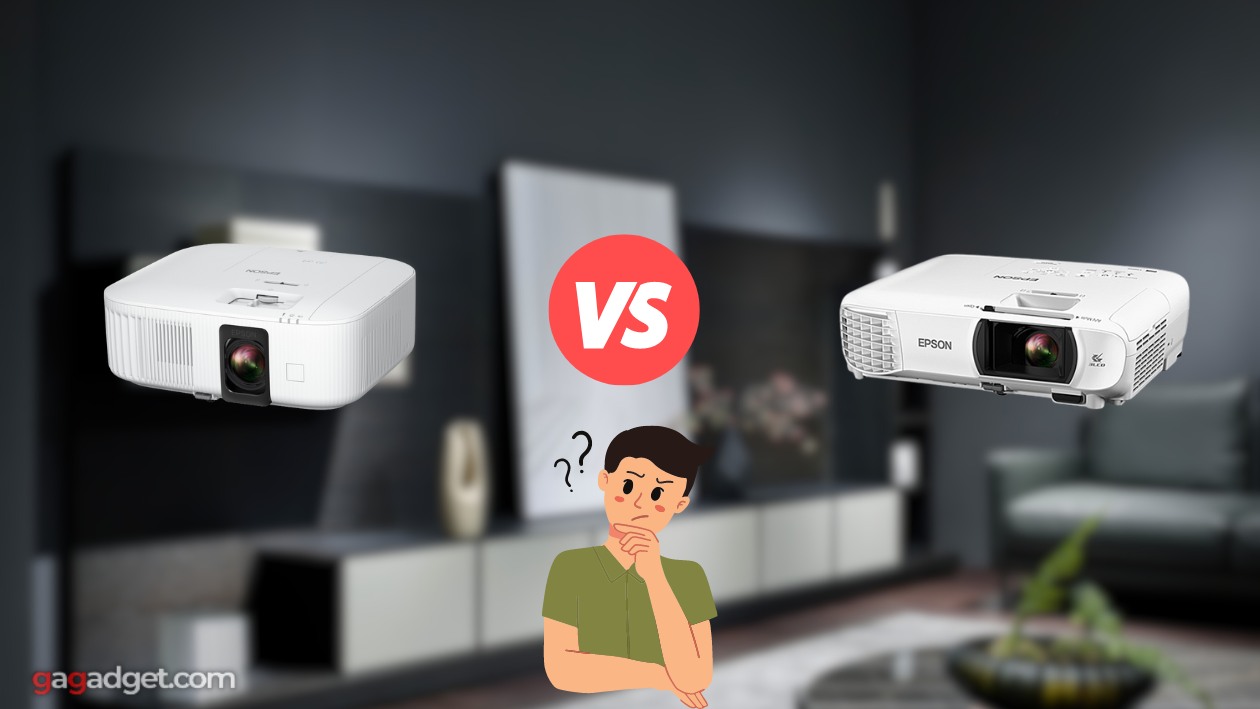
Epson 2350 vs 1060: Quick Overview
I respect your time and aim to provide only the essential information, skipping the fluff.
If you're in a hurry, here's my quick take: The Epson 2350 is the clear choice for gaming thanks to its faster input lag, 120Hz refresh rate, and 4K enhancement. It also has a much higher 35,000:1 dynamic contrast ratio and the convenience of Android TV streaming built-in. However, the Epson 1060 is about 10% brighter at 3,100 lumens and often available for a lower price.
In my opinion, go for the Epson 2350 if you're a gamer looking for the smoothest, most responsive big screen experience or a movie buff who wants the added punch of 4K pixel shifting and deeper blacks. But if you prioritize overall brightness for lights-on viewing and want to save some cash, the Epson 1060 remains an excellent 1080p projector for the price.
Table of Contents
- Epson 2350 vs 1060: Full Comparison
- Epson 1060 vs 2350: Design
- Epson 2350 or 1060: Owner Reviews
- Epson 2350 and 1060 Alternatives
- Which is Better, Epson 2350 or 1060?
Epson 2350 vs 1060: Full Comparison
| Specification | Epson 1060 | Epson 2350 |
| Image |
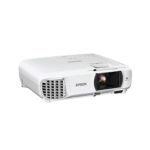
|

|
| Resolution | Full HD 1920x1080 | Full HD 1920x1080 4K w/ pixel shifting |
| Brightness | 3,100 lumens (ISO) | 2,800 lumens (ISO) |
| Contrast | 15,000:1 full on/off | 35,000:1 dynamic |
| Display Technology | 3LCD | 3LCD |
| Input Lag | 52ms (1080p/60Hz) | 26ms (1080p/60Hz), 18ms (1080p/120Hz) |
| Light Source | Lamp (210W) | Lamp (230W) |
| Light Source Life | 6,000 / 10,000 hours (Normal/Eco) | 4,500 / 7,500 hours (Normal/Eco) |
| Zoom / Focus | 1.2x manual zoom, manual focus | 1.62x manual zoom, manual focus |
| Lens Shift | No | Vertical ±60% |
| Throw Ratio | 1.02 - 1.23:1 | 1.34 - 2.17:1 |
| Audible Noise | 37 dB / 28 dB (Eco) | 36 dB / 28 dB (Eco) |
| Internal Speakers | 2W mono | 10W mono |
| Smart Features | None | Android TV, Google Assistant |
| Connectivity | 2x HDMI (1x MHL), USB, composite, VGA, wireless networking | 2x HDMI, USB |
| Weight | 5.95 lbs | 9 lbs |
| Release Year | 2017 | 2022 |
Both the Epson 1060 and 2350 utilize 3LCD technology, which means they have three separate LCD panels, one each for red, green, and blue light. This allows them to produce a bright, colorful image without the "rainbow effect" seen on some DLP projectors. The 1060 pumps out an impressive 3,100 lumens of white and color brightness, giving it an edge for daytime viewing or rooms with ambient light. It maintains solid contrast and saturation even on the brighter picture modes.
The older 210W lamp isn't quite as power efficient as the 2350's newer 230W design but still delivers punchy highlights and good black levels for the price. Where the 2350 pulls ahead is in contrast, with a substantial 35,000:1 dynamic contrast ratio powered by Epson's Dynamic Iris system. This allows it to produce deeper, inkier blacks and preserve more shadow detail in dark scenes. It's not a true match for an OLED TV, but it's a visible step up from the 1060's still good 15,000:1 full on/off contrast.
The 2350 also employs a nifty pixel shifting technology that Epson calls "4K enhancement." While not delivering a true native 4K image, it can accept 4K input signals and display them with extra pixel detail and sharpness compared to standard 1080p. This gives 4K content a bit more clarity and depth, especially noticeable in fine patterns, hair, and textures. So while the Epson 1060 remains a very bright and color-rich projector, the 2350 takes contrast, black level, and perceived detail up a notch thanks to its Dynamic Iris and 4K enhancement tricks. But both deliver an excellent, vibrant 1080p picture that's well suited for movies, shows, sports, and games.
If you're a gamer, the Epson 2350 has a clear advantage in responsiveness and smoothness. Its input lag measures approximately 26ms at 1080p/60Hz and a blazing fast 18ms at 1080p/120Hz. This means there's very minimal delay between your controller inputs and the on-screen action, which is crucial for timing-sensitive games like shooters, fighters, and rhythm titles. The 1060, while fine for casual gaming, has a more typical input lag of around 52ms at 1080p/60Hz. That's still playable but could feel a bit sluggish for fast-paced or competitive games.
The 2350 is simply on another level for gamers who demand the snappiest big screen experience. Another gaming perk of the 2350 is its ability to accept and display 120Hz signals at 1080p. This allows compatible gaming PCs and consoles like the Xbox Series X/S to output at 120 frames per second, resulting in ultra-smooth motion and lower perceived blur. The 1060 tops out at 60Hz, which is still great but not quite as silky. Both projectors do offer gaming-specific picture modes, which boost contrast, color saturation, and shadow detail for a more vibrant and immersive experience. But with its faster response times and 120Hz support, the Epson 2350 is definitely the superior gaming machine.
While both the Epson 1060 and 2350 are relatively compact and easy to set up, the 2350 offers a bit more placement flexibility thanks to its wider zoom range and lens shift. The 1060 has a 1.2x manual zoom, which allows for some adjustment of the projector's distance from the screen. At a 100" diagonal 16:9 picture, it can sit anywhere from about 9.75 to 11.75 feet back. That's a decent amount of wiggle room, but you'll need to place the projector pretty much dead center with the screen as it lacks any lens shifting. The 2350 bumps that zoom up to 1.62x, giving you a lot more leeway in terms of projector distance. For that same 100" screen, it can be placed anywhere from 11.7 to 19 feet back.
That's a massive range that opens up many more placement options. Combined with its substantial ±60% vertical lens shift, you can position the 2350 well above or below the screen and still dial in a perfectly aligned picture. This lens shift also makes it easier to use the 2350 with a retractable ceiling mount, as you don't have to fuss as much with exact positioning. The 1060 can certainly work in a ceiling mount but requires more precise measurements and alignment during installation.
Both offer manual horizontal and vertical keystone correction to square up the image if the projector is slightly off-axis. But it's always best to align things optically if possible, as digital keystone can slightly reduce image sharpness. For most rooms, either projector should be fairly simple to position. But for tricky spaces or complex installs, the Epson 2350's extra zoom and lens shift are very welcome tools to achieve the perfect projected image.
Epson 1060 vs 2350: Design
The Epson 1060 and 2350 share a similar all-white sculpted plastic housing with offset lenses, front-facing vents, and rear connector panels. But there are some key differences in size, weight, and I/O.
Epson 1060 Design:
Epson 2350 Design:
The 1060 is more compact at 3.6" high, 11.9" wide, and 9.8" deep, weighing 5.95 pounds. It features a sliding lens cover on the front. The larger 2350 measures 4.8" high, 12.2" wide, and 12.4" deep, with a weight of 9 pounds. It has a detachable lens cap, a bigger lens, and a sturdier build.
Both projectors have similar fan noise levels, with the 2350 measuring 36dB in Normal mode and 28dB in Eco, while the 1060 is nearly identical at 37dB and 28dB, respectively. The 2350 has a more modern design, while the 1060 is more compact and portable. Both are relatively easy to set up for most home theater environments.
Epson 2350 or 1060: Owner Reviews
To give you a broader perspective, let's see what actual buyers have to say about their experiences with the Epson 1060 and 2350 projectors:
Epson 1060 Reviews:
Praises:"The brightness and color accuracy on this projector are amazing for the price. I can watch sports and TV shows with the lights on and still get a great, vivid picture."
"Setup was a breeze - just plugged in my streaming stick and gaming console and was up and running in minutes. The short throw lens makes it easy to get a big image in my small apartment."
***
Drawbacks:"The black levels and contrast are decent but not mind-blowing. In a fully dark room, you can notice some grayish blacks and slightly crushed shadow details."
"While the input lag is tolerable for casual gaming, serious gamers will probably want something more responsive. I notice a bit of delay in fast-paced shooters and fighting games."
Epson 2350 Reviews:
Praises:"I'm blown away by the gaming performance on this projector. The input lag is nearly imperceptible and 120Hz support makes everything buttery smooth. It's like having a massive gaming monitor."
"The Android TV interface is snappy and intuitive. I love being able to just fire up Netflix or YouTube without having to fumble with another device. And the Google Assistant is surprisingly useful for hands-free control."
***
Drawbacks:"The contrast and black levels, while very good, aren't quite on par with my OLED TV. You can still notice some slight black crush and elevated blacks in super dark scenes."
"The projector lamp runs a bit hot and the fan noise is noticeable if you're sitting right next to it. It's not a dealbreaker but I do wish it was a bit quieter, especially in high lamp mode."
Owners of both projectors frequently praise the impressive brightness, color accuracy, and ease of setup. 1060 buyers love the punchy, vivid image for sports and TV. Some wish for better contrast and gaming responsiveness but are satisfied overall. 2350 users rave about the buttery smooth 120Hz gaming, Android TV convenience, and excellent 4K sharpness.
A few note the black levels can't quite match OLED but are still pleased with the picture. On the downside, some 1060 owners find the black levels and shadow detail lacking in a fully dark room. Input lag is also a bit high for competitive gaming. The main complaints about the 2350 are the slightly elevated fan noise and black crush in the darkest content. But on the whole, both models deliver an impressive viewing experience for their respective prices and feature sets.
Epson 2350 and 1060 Alternatives
If you're not completely sold on either the Epson 1060 or 2350, here are a couple of alternative 1080p home theater projectors in a similar price bracket:
- BenQ HT2150ST: A short throw gaming projector with 2,200 lumens, low 16ms input lag, and a 6x RGB color wheel for rec.709 color accuracy;
- Optoma HD39HDR: A high brightness projector with 4,000 lumens, HDR10 support, a 6-segment RYGCWB color wheel, and 1.3x zoom.
The BenQ HT2150ST is a top pick for gamers who want a responsive short throw projector with excellent color. Its 16ms lag is even lower than the Epson 2350 at 60Hz, though it lacks 120Hz support. The short 0.69-0.83 throw ratio is great for smaller rooms.
For those seeking maximum brightness, the Optoma HD39HDR cranks out an eye-searing 4,000 lumens, making it suitable for even the most well-lit environments. The expanded color wheel covers the REC.709 HD color space and it supports HDR10 for a bit of extra pop. Just note the input lag is only average at around 33ms.
Which is Better, Epson 2350 or 1060?
After extensive testing, it's clear the Epson 2350 vs Epson 1060 are both highly capable 1080p projectors that deliver bright, colorful, crisp images for movies, shows, sports, and games. But their key differences in gaming features, contrast, installation flexibility, and smarts make each one better suited to different buyers and viewing scenarios.
For most people, I recommend the Epson 2350. Its blazing fast input response, 120Hz refresh rate, and 4K pixel shifting make it an absolutely stellar gaming projector that can keep up with the latest consoles and PC hardware. The high 35,000:1 dynamic contrast and wider zoom/lens shift also give it an edge for dedicated movie watching and installation ease. And the included Android TV dongle is incredibly convenient for streaming without extra devices.
However, the Epson 1060 remains an excellent value for those who prioritize overall brightness and affordability. Its 3,100 lumens are ideal for casual viewing in moderately lit rooms, and the short throw lens makes it easy to get a big picture in smaller spaces. Legacy input options like VGA and composite are handy for connecting older gear. And while not a gaming powerhouse like the 2350, its input lag is fine for all but the most hardcore players.
At the end of the day, you can't go wrong with either Epson projector for a stellar big screen experience. The 2350 is worth the extra investment for discerning gamers, cinephiles, and those with tricky install locations. But the tried-and-true 1060 delivers outstanding bang-for-the-buck as an everyday 1080p beamer.
I hope this in-depth comparison has helped you decide which Epson projector best fits your specific needs, preferences, and viewing space. As always, feel free to hit me up if you have any other questions!
Go Deeper:

